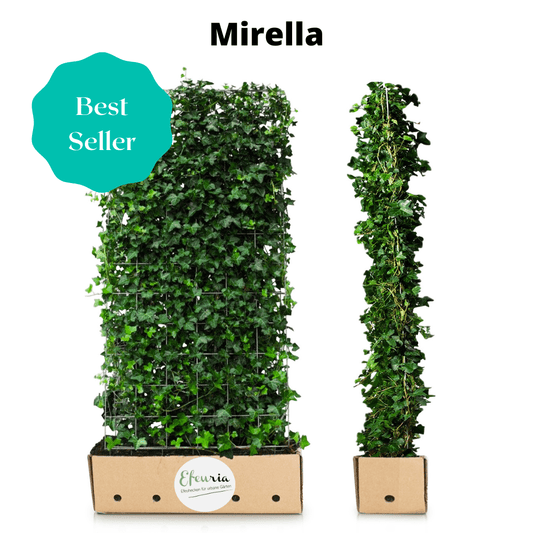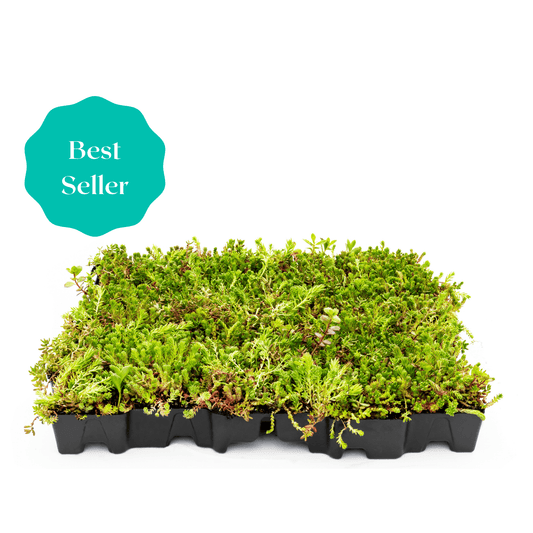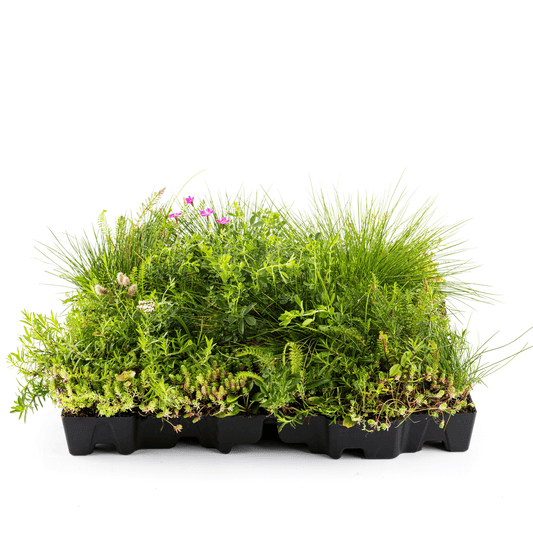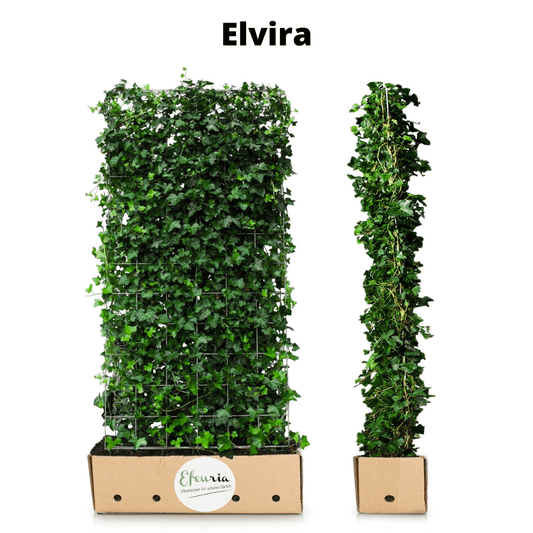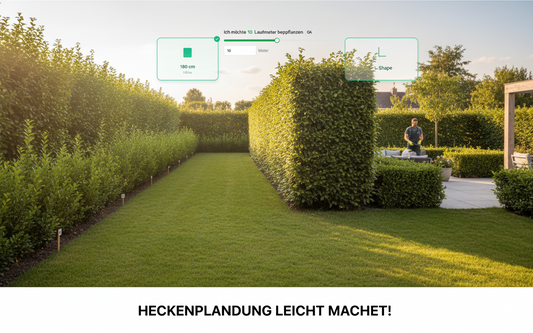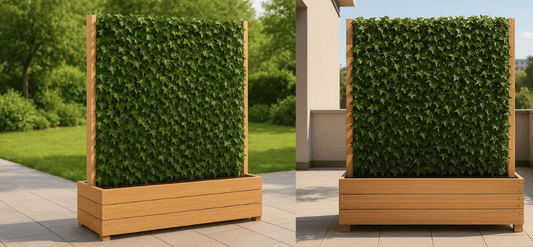The yew hedge (Taxus baccata) - An elegant beauty for the garden
The yew hedge (Taxus baccata) is one of the most popular plants for gardens. With its dense growth and bright green needles, it is a real feast for the eyes. Yew hedges are not only beautiful to look at, but also extremely versatile. They are suitable as a natural border and privacy screen in the garden, as well as for designing beds and borders. Because they tolerate pruning very well, they can be shaped into almost any desired form, be it as a straight hedge, curved shape or even as an artistic object.
A yew hedge needs a sunny or partially shaded location in the garden. It is important to ensure that the soil is well-drained and not too moist. The yew does not like waterlogging at all. The right planting time also plays a role. Ideally, the yew hedge should be planted in spring or autumn so that it has enough time to establish itself before the cold winter months begin.
Tips for the care and design of yew hedges in the garden
Maintaining a yew hedge is easy and doesn't require much effort. However, there are a few things to consider to maintain the beauty and health of the plants. Regular pruning is essential to keep the hedge in shape and encourage growth. It is advisable to trim the yew hedge twice a year, in spring and late summer. Pruning should be moderate to ensure healthy plant growth.
It is also advisable to fertilize the yew hedge regularly to ensure it has an adequate supply of nutrients. A special hedge fertilizer is suitable for this, as it provides the plants with all the important nutrients. Watering the hedge is also important during long dry periods to prevent drying out and damage.
There are no limits to your imagination when designing yew hedges. Different heights, shapes and shades of yew ensure a varied look in the garden. Yew hedges can also be wonderfully combined with other plants, such as flowers or perennials. It is important to pay attention to the different needs of the plants and to select suitable partners.
The versatile advantages of the yew hedge
The yew hedge has a number of advantages for the garden. Firstly, it serves as an optimal visual barrier and thus offers privacy for your own garden. It protects against prying eyes and offers a comfortable ambience. Secondly, the yew hedge is also a natural border that demarcates the property and thus enables a clear demarcation of the garden.
In addition, the yew hedge also offers protection and habitat for many native animals. Birds and insects find protection from wind and weather in the dense needles of the yew hedge. Due to its dense structure and green foliage all year round, the yew hedge offers an important source of food and nesting opportunities for many species.
Choosing the right location for your yew hedge
When choosing the right location for your yew hedge, you should consider a few important things. The yew loves a sunny or partially shaded location that is protected from strong winds. The soil should also be well-drained and not too moist to prevent waterlogging.
Before planting your yew hedge, it is advisable to prepare the soil. Remove weeds, loosen the soil and improve it with compost or peat if necessary. Also make sure that you allow enough space for the yew hedge to grow. Depending on the variety, yew hedges can grow up to three metres high.
Yew hedges - care and pruning at a glance
The care and pruning of a yew hedge is relatively simple and does not require much effort. To encourage healthy growth and maintain the desired shape, you should prune your yew hedge twice a year, in spring and late summer. It is important to prune moderately so as not to weaken the plants.
In addition, it is advisable to fertilize your yew hedge regularly to ensure it has an adequate supply of nutrients. It is best to use a special hedge fertilizer that provides the plants with all the essential nutrients. Also make sure to water your yew hedge regularly, especially during dry periods, to avoid drying out and damage.
Yew hedges as privacy screens and natural borders in the garden
Yew hedges are not only extremely decorative, but are also ideal as a privacy screen and natural border in the garden. They offer you privacy from prying eyes and create a cozy ambience in your garden. Whether as a precise, straight hedge or an artistic, curved shape - individual design ideas can be realized with yew hedges.
The yew tree is ideal as a natural border to mark off your own property. It gives your garden a clear structure and ensures a clear demarcation. In addition, the dense needles and evergreen foliage of the yew hedge offer protection and habitat for many native animals. Birds find nesting opportunities here and insects use the plants as shelter.
Combination possibilities: Yew hedges in harmonious harmony with other plants
Yew hedges are extremely versatile and can be wonderfully combined with other plants. For example, you can combine yew hedges with flowers, perennials or grasses to create varied and harmonious beds and borders. When choosing the combination partners, however, you should make sure that the plants have similar location and care requirements.
Combining yew hedges with other plants offers numerous design options for your garden. You can combine different heights, colors and shapes of plants to create an individual and varied garden image.
Yew hedges - wildlife and their importance for the garden
Yew hedges not only provide an elegant beauty in the garden, but also play an important role for numerous native animal species. The dense needles of the yew hedge offer birds protection from wind and weather as well as nesting opportunities. Many insect species also find shelter and food in the hedges.
By planting a yew hedge in your garden, you are actively contributing to the preservation of local wildlife. Give the animals a habitat and a source of food by treating your yew hedge without spraying and with natural care products.
Summary and conclusion
Yew hedges are an elegant beauty for the garden. They are not only impressive due to their dense growth and bright green needles, but also due to their many advantages. As a privacy screen and natural border, yew hedges offer privacy and create a clear demarcation in the garden. They are also an important habitat and source of food for many native animals.
The care and pruning of a yew hedge requires little effort, but is important to maintain the beauty and health of the plants. Regular fertilization and watering as well as moderate pruning in spring and late summer are recommended.
If you want to combine your yew hedge with other plants, you should make sure that they have similar location and care requirements. This way you can realize individual design ideas and create a harmonious garden image.
Discover the variety of ivy hedges and green roofs from Efeuria . With an ivy hedge or green roof you can add further green highlights to your garden.

